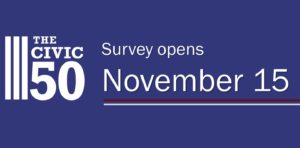 By Michele Egan Sterne, Vice President, For Momentum
By Michele Egan Sterne, Vice President, For Momentum
Research supporting employee engagement continues to accumulate. Studies are filled with compelling evidence about the positive benefits of an engaged work force—including attracting the best talent and increasing employee retention and productivity. On the negative side, data illustrates the staggering expenses companies incur when they fail to embrace or execute employee engagement strategies.
For years, Fortune 500 companies have expressed the value of employee engagement as part of their CSR reporting—a value equal to millions of dollars each year for large global organizations. Today, forward-thinking companies of all shapes and sizes are investing in a variety of strategies aimed at recruiting and inspiring individuals and maintaining a competitive advantage through effective employee engagement programs. But they may be overlooking one crucial member of their team when plugging employee engagement into their overall CSR strategies—the HR Department.
Points of Light, one of the world’s largest organizations dedicated to volunteer service, and its Corporate Institute, a go-to resource for community-minded companies, recognize community-minded corporations through the Civic 50. They identify the companies through an annual survey process. In 2016, they looked at the new role of social engagement and the alignment of “purpose” inside of companies. The beauty of the Civic 50 award is that it provides a roadmap for any company looking to improve the quality of life in the communities where they do business.
Our friend, Bea Boccalandro, president of VeraWorks, penned a compelling essay on how the 2016 Civic 50 winners took a stand in a debate that has divided boardrooms for generations. Guess what? Pursuing societal purpose is winning. We are excited that “job purpose” is a becoming a priority, but find it surprising that often the human resources department is not as connected in the effort as it could be.
Earlier this summer, I attended a panel discussion at Sustainable Brands around internal engagement and how to change employee mindsets and culture to build a more “purposeful” organization. This was a bit of a departure from the standard content around sustainability. It was a great session that featured three very different, yet valid, efforts aimed at using employee instincts to build a case for purpose-driven employee behavior.
Another friend, Beau Swanson, Vice President of Marketing at Harrah’s Resort Southern California, shared during the panel that Caesars Entertainment Corporation takes a grass-roots approach to sustainability. The company creates ways to involve everyone in their social and environmental sustainability efforts, from their loyalty club to their front-line employees. This further demonstrates that engagement strategies that are measured, managed and integrated across business functions are the best practice. Having HR involved means building employee engagement activities into an individual’s performance plan and into annual action plans, so that employees know what’s expected of them and how they’ll be rewarded for doing it.
For me, the red thread that connects the two different approaches is motivating employees to care and act in socially-concerned ways both at the workplace and ultimately carry through these behaviors in their everyday lives at home and at leisure. It seems like we need to invite HR to the table. We lean on these folks for talent recruitment and retention, but many times employee engagement campaigns are conceived of and executed by different departments. The holy grail is involving HR and everyone in to your CSR planning at the very beginning so that you can brainstorm ways to make social responsibility and sustainability a part of your company culture.
Clearly a company’s reputation is no longer internally “managed”—employees and customers using social media are more powerful voices for a company’s brand. Many companies encourage colleagues and customers to use their social networks to tell their own stories in their own words. No doubt, mobile and social functionality can strengthen employee participation and boost engagement. In addition to company channels, without being asked, many individuals, armed with ever-present smartphones, leverage their personal networks to share their volunteer experiences. Forward-thinking companies have an opportunity to create a level of transparency unheard of just five or ten years ago.
Increasingly, employee engagement has become a core business strategy with impact and results. If your company is interested in driving both economic and indirect benefits via innovative employee engagement programs, we would love to help. Email me to learn how to bridge the gap between CSR and HR and other vital job functions when it comes to social impact planning.
 P.S. The 2017 Civic 50 applications open soon—next Tuesday, November 15, to be precise. Visit the Civic 50 website for more info.
P.S. The 2017 Civic 50 applications open soon—next Tuesday, November 15, to be precise. Visit the Civic 50 website for more info.

Leave a Reply